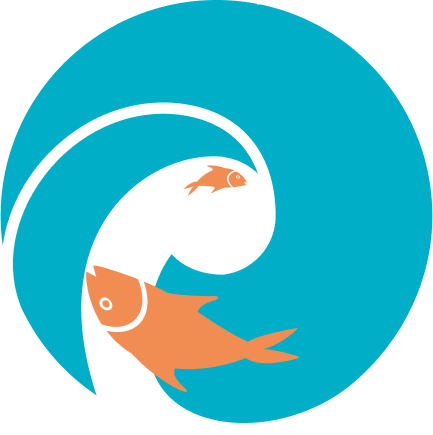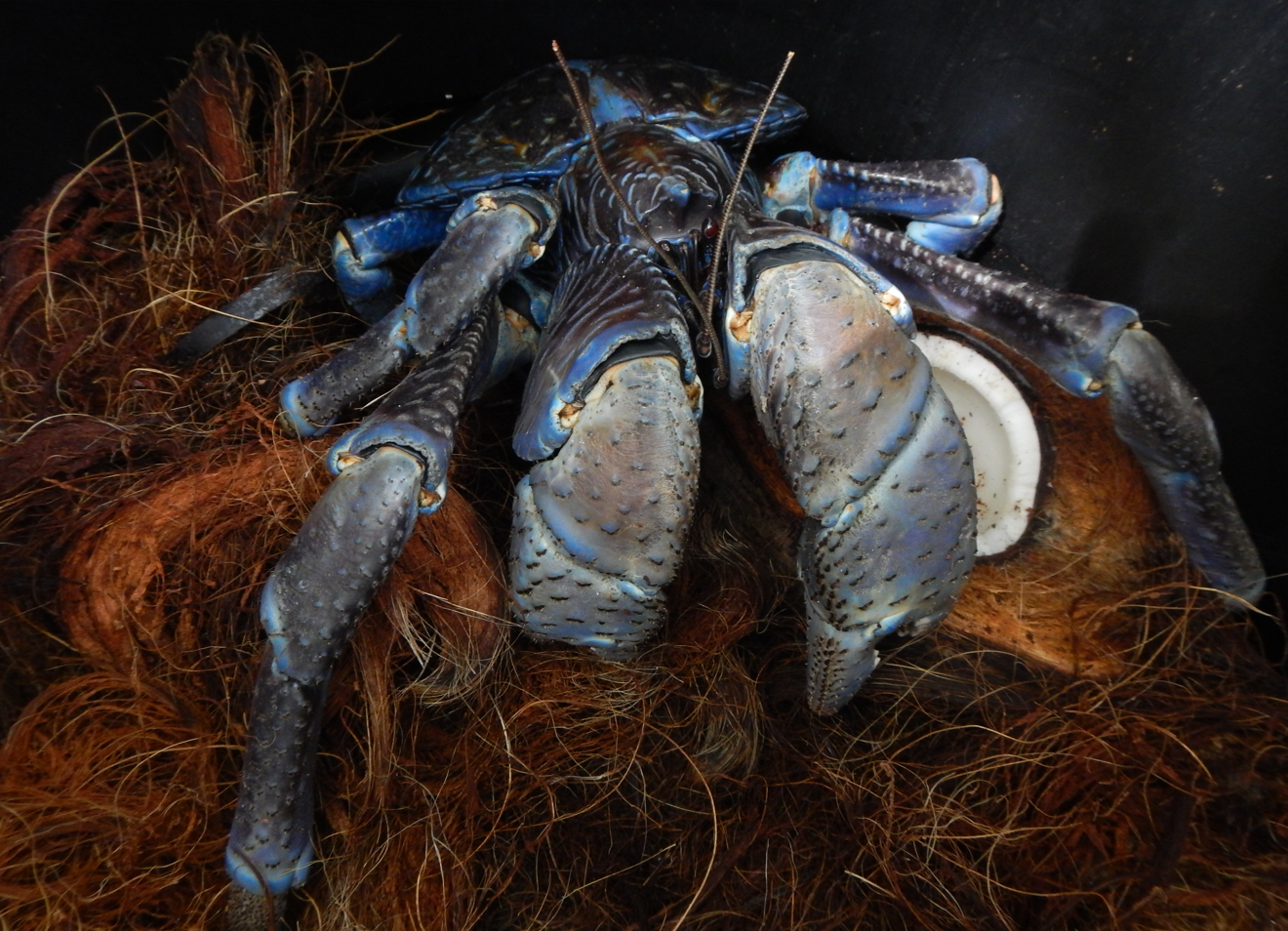Image: © Kalo Pakoa, SPC
To gain access to full information on coconut crabs, download the information sheet produced by the LMMA Network and SPC.
If you have noticed a decline in your catches or are concerned about coconut crab populations, here are some priority actions the community can consider in addition to national regulations:
Fish smart rules
Tabu areas
Setting up a coconut crab reserve in an area with suitable habitats, which would have to be fenced to exclude livestock and have access to the sea to allow crabs to reproduce. Initially, it may be necessary to transplant coconut crabs into the reserve from nearby areas;
Allowing fee-paying tourists to take guided evening tours to view the crabs in their natural habitat. National tourism organisations and hotels may assist in attracting tourists;


Size limits
Restricting the capture and sale of large coconut crabs from areas outside the reserve to a reasonable bag limit and enforcing national regulations, including minimum size limits.
Good to know: females carry their eggs for an extended time period
Banning the capture of crabs during the breeding season is not practical as females carry their eggs for an extended time period.
Fishing methods
Coconut crabs are highly prized as food and their ease of capture has resulted in their disappearance in many island countries. Local people may set baits of split coconuts pinned to the ground and check the baits at night with a torch. Although farming is often suggested as a way of producing coconut crabs for the market, their complex life cycle and slow growth make this a difficult undertaking.
Management measures in the region
National fisheries authorities have applied catch limits, bans on taking females bearing eggs and size limits. These national regulations are effective if catches of coconut crabs can be checked at relatively few market places. However, as fishing is usually done at night and the catch is disposed of through scattered outlets including local markets, hotels and restaurants, these regulations are difficult to enforce.
In some countries it has been made illegal for restaurants to buy coconut crabs. Although commendable, this has deprived local people of a source of income. However, it is possible for communities to make up for this loss through eco-tourism.
Some species

The coconut crab, Birgus latro, is a crustacean related to hermit crabs. The juveniles live in sea-snail (gastropod) shells but the adults live without shells and grow to large sizes on land. The coconut crab is one the largest of all crabs and reaches weights of over 4 kg (with some reports of weights up to 14 kg). The adults have massive crushing claws and long legs, which enable them to climb trees. The colour of adults varies from light violet through to deep purple to brown.
The coconut crab is distributed in tropical islands from the Indian Ocean to French Polynesia in the Pacific Ocean. Its vulnerability to animals such as dogs and pigs as well as the destruction of its coastal habitats have probably accounted for its disappearance in many islands and atolls.
Adult coconut crabs live alone in underground burrows and rock crevices in coastal forest regions and some have been found up to 6 km from the sea. Adults cannot swim and will drown in seawater.
Coconut crabs generally remain hidden during the day and come out to look for food at night. They eat other crabs, dead animals, and will sometimes raid rubbish bins for human food scraps. They eat rotting leaves as well as Pandanus fruit and coconuts that have fallen to the ground. They are capable of removing the husk of a coconut with their large claws and piercing its soft germination eye with one of their legs.
Coconut crabs have separate sexes. During mating, the male transfers sperm packets (spermatophores) to the underside of a soft-shelled female. A few weeks later, the female releases her eggs. These are fertilised as they pass over the spermatophores and form a spongy, orange, egg mass, which is carried underneath her body for a few months.
The female moves to the shore-line and releases the fertilised eggs into the ocean at high tide. These hatch into small forms (the larval stages) which drift in the ocean for about a month. Less than one in every thousand survives to settle on shore and enter a suitable sea-snail shell. As they change into juveniles, they lose the need for protective shells and move further inland as they grow. Less than one in every hundred survives to become an adult.
As in all crustaceans, coconut crabs cast off their hard covering at intervals in order to grow. When the old shell is cast off, it takes about 30 days for a new shell to harden and, as the crab is vulnerable during this time, it stays hidden for protection. Coconut crabs are capable of reproducing at approximately 5 years of age and can live for over 30 years.
Related resources

To gain access to full information on coconut crabs, download the information sheet.
